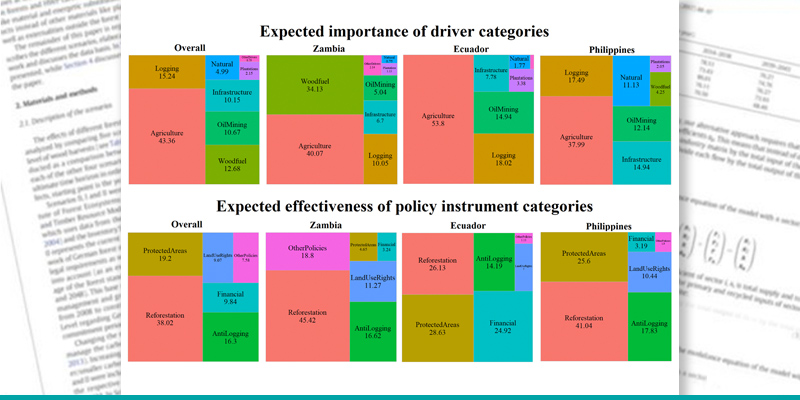Results indicate that understanding of drivers and confidence in policy instruments are significantly lower at the subnational level and in Zambia, and suggest that there cannot be one-size-fits-all solutions in international forest policy. Agriculture remains the driving force with the greatest expected influence (43%), while a strong preference for reforestation and forest restoration (38%) indicates a paradigm shift from protected areas to a greater focus on integrative approaches.
- Ferrer Velasco R, Lippe M, Fischer R, Torres B, Tamayo F, Kanungwe Kalaba F, Kaoma H, Bugayong L, Günter S (2023) Reconciling policy instruments with drivers of deforestation and forest degradation : cross-scale analysis of stakeholder perceptions in tropical countries. Sci Rep 13:2180, DOI:10.1038/s41598-023-29417-y









